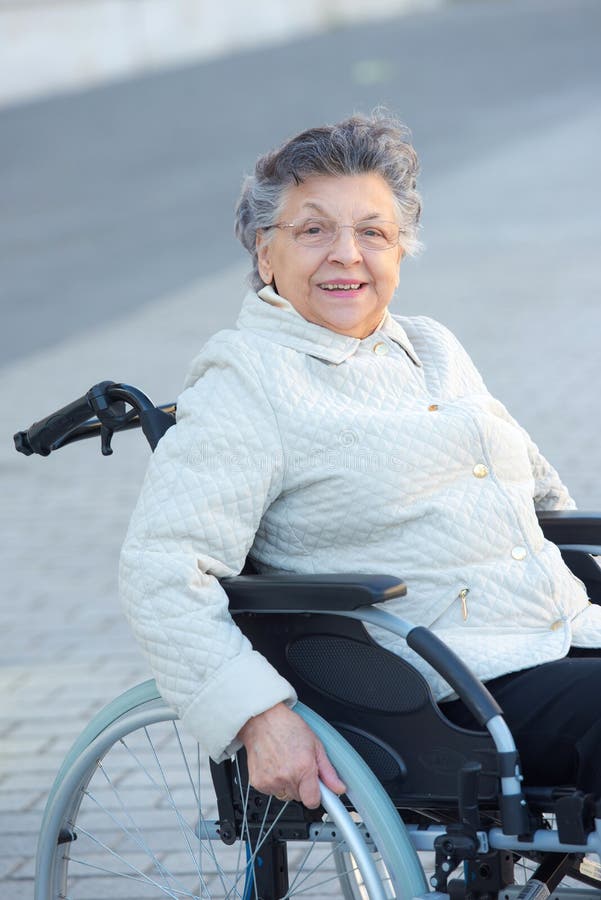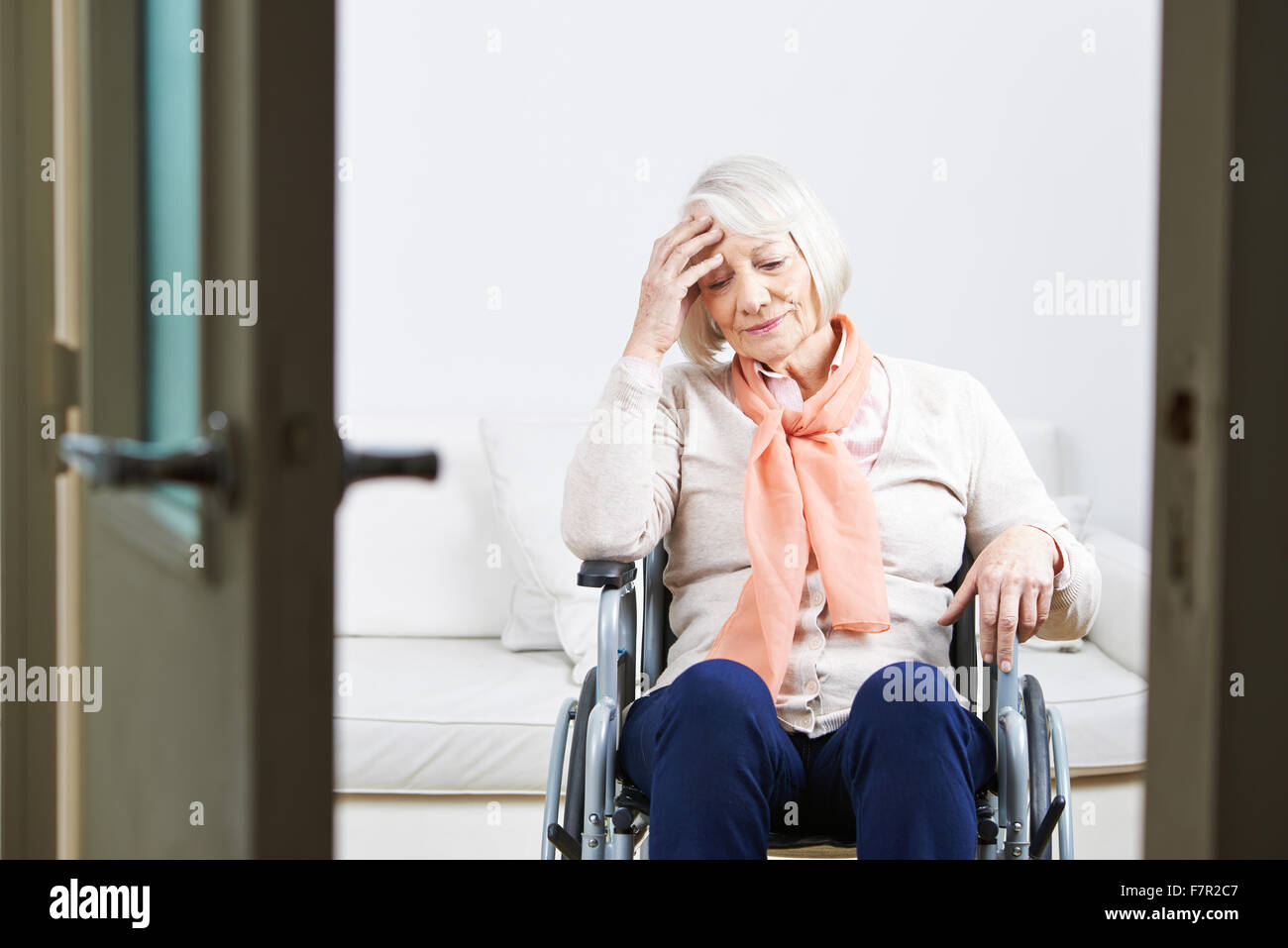Empowering Independence: Understanding The Life Of An Old Woman In A Wheelchair
As the global population ages, the life of an old woman in a wheelchair has become an increasingly significant topic in discussions about healthcare, accessibility, and social support systems. The challenges faced by elderly individuals who rely on wheelchairs are multifaceted, encompassing physical, emotional, and societal aspects. Understanding these challenges is crucial for fostering a more inclusive and compassionate society.
Millions of elderly women around the world use wheelchairs as a means to maintain mobility and independence. However, this transition often comes with its own set of obstacles. From navigating inaccessible environments to confronting societal stereotypes, the journey of an old woman in a wheelchair is one that demands attention and empathy.
This article delves into the complexities of living as an elderly woman in a wheelchair. By exploring topics such as accessibility, healthcare, emotional well-being, and community support, we aim to provide a comprehensive understanding of the challenges and opportunities that arise in this context. Let's embark on this journey to create a more supportive world for everyone.
Read also:Meet Lucy Laitsner The Rising Star Whorsquos Making Waves In The Industry
Table of Contents
- Introduction
- Biography of an Elderly Woman in a Wheelchair
- Physical Challenges
- Emotional Well-being
- Accessibility Issues
- Healthcare Support
- Community Support
- Social Stigma and Stereotypes
- Technological Advancements
- Call to Action
Biography of an Elderly Woman in a Wheelchair
Life Before the Wheelchair
Understanding the life of an elderly woman in a wheelchair often begins with appreciating her journey before the need for mobility assistance arose. Many women in this demographic have lived full and vibrant lives, contributing significantly to their families, communities, and workplaces. Below is a brief overview of what life might have looked like for such individuals:
- Active participation in family life, often playing a central role in raising children and grandchildren.
- Engagement in professional careers or community volunteer work.
- Participation in hobbies and recreational activities that required physical movement.
Data and Biodata
| Attribute | Details |
|---|---|
| Name | Mary Johnson (Hypothetical Example) |
| Age | 78 years |
| Occupation (Before Retirement) | Elementary School Teacher |
| Reason for Wheelchair Use | Post-stroke mobility impairment |
| Family Status | Married, with two adult children and four grandchildren |
Physical Challenges Faced by an Old Woman in a Wheelchair
Physical challenges are among the most immediate concerns for elderly women who use wheelchairs. These challenges often stem from the underlying conditions that necessitate the use of a wheelchair, as well as the limitations imposed by the wheelchair itself. Below are some of the key physical challenges:
- Limited mobility and the inability to perform daily tasks independently.
- Potential for secondary health issues, such as pressure sores, muscle atrophy, and joint stiffness.
- Difficulty in transferring from the wheelchair to other surfaces, such as beds or chairs.
According to the World Health Organization (WHO), approximately 70 million people worldwide require wheelchairs, with a significant portion being elderly individuals. Addressing these physical challenges requires a holistic approach that includes adaptive equipment and physical therapy.
Emotional Well-being of an Elderly Woman in a Wheelchair
Mental Health Considerations
The emotional well-being of an elderly woman in a wheelchair is as important as her physical health. The transition to wheelchair use can be emotionally taxing, leading to feelings of isolation, frustration, and even depression. Key emotional challenges include:
- Grieving the loss of independence and physical capabilities.
- Dealing with societal perceptions and stereotypes about aging and disability.
- Maintaining a sense of purpose and identity despite physical limitations.
Research published in the Journal of Aging and Health highlights the importance of mental health support for elderly individuals in wheelchairs. Counseling, support groups, and mindfulness practices can play a vital role in promoting emotional resilience.
Accessibility Issues for an Old Woman in a Wheelchair
Environmental Barriers
Accessibility remains a critical issue for elderly women in wheelchairs. Many public and private spaces are not fully equipped to accommodate individuals with mobility impairments. Common accessibility challenges include:
Read also:Julia Ernst Drama The Untold Story Behind The Viral Sensation
- Lack of ramps and elevators in buildings.
- Inadequate public transportation options for wheelchair users.
- Unfriendly urban designs that prioritize able-bodied individuals.
Efforts to improve accessibility are ongoing, with governments and organizations worldwide implementing policies to make environments more inclusive. The Americans with Disabilities Act (ADA) in the United States and similar legislation in other countries are examples of such initiatives.
Healthcare Support for Elderly Women in Wheelchairs
Specialized Care Needs
Healthcare support for elderly women in wheelchairs involves addressing both their immediate medical needs and long-term wellness goals. Key aspects of healthcare support include:
- Regular check-ups to monitor and manage chronic conditions.
- Access to physical therapy and rehabilitation services.
- Provision of assistive devices and adaptive technology.
A study published in the Journal of Geriatric Care emphasizes the importance of personalized care plans for elderly wheelchair users. Tailoring healthcare interventions to the unique needs of each individual can significantly improve their quality of life.
Community Support for Elderly Women in Wheelchairs
Role of Family and Friends
Community support plays a vital role in enhancing the quality of life for elderly women in wheelchairs. Family members, friends, and community organizations can provide emotional, physical, and practical assistance. Key forms of community support include:
- Companionship and emotional support from loved ones.
- Volunteer-driven programs offering transportation and home care services.
- Community centers and senior groups that foster social interaction.
Building strong support networks is essential for combating loneliness and promoting social inclusion among elderly wheelchair users.
Social Stigma and Stereotypes
Changing Perceptions
Social stigma and stereotypes about aging and disability can have a profound impact on the lives of elderly women in wheelchairs. Common misconceptions include viewing them as helpless or burdensome. To address these issues, it is crucial to:
- Promote awareness and education about aging and disability.
- Encourage media representation that portrays elderly wheelchair users as capable and active individuals.
- Engage in dialogue and advocacy to challenge negative stereotypes.
Organizations such as the National Council on Aging and the Disability Rights Education and Defense Fund (DREDF) are actively working to change societal perceptions and promote inclusivity.
Technological Advancements for Elderly Women in Wheelchairs
Assistive Technology
Technological advancements have revolutionized the lives of elderly women in wheelchairs, offering innovative solutions to enhance mobility and independence. Key technologies include:
- Smart wheelchairs equipped with navigation systems and voice-activated controls.
- Home automation systems that allow for hands-free control of appliances and devices.
- Telehealth platforms that facilitate remote medical consultations and monitoring.
According to a report by the Technology and Aging Journal, these advancements not only improve physical capabilities but also empower elderly individuals to live more fulfilling lives.
Conclusion and Call to Action
In conclusion, the life of an elderly woman in a wheelchair is shaped by a complex interplay of physical, emotional, and societal factors. By understanding and addressing these challenges, we can create a more inclusive and supportive world for everyone. Here are some key takeaways:
- Physical challenges can be mitigated through adaptive equipment and therapy.
- Emotional well-being requires attention to mental health and social connections.
- Accessibility improvements are essential for fostering independence.
- Healthcare and community support play crucial roles in enhancing quality of life.
We invite you to take action by sharing this article, engaging in discussions about aging and disability, and advocating for policies that promote inclusivity. Together, we can make a difference in the lives of elderly women in wheelchairs and their families. Let's continue the conversation in the comments below and explore other resources on our website.


